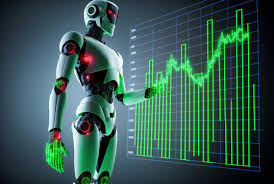In the realm of forex trading, where the global currency markets operate around the clock, traders are constantly seeking tools and strategies to enhance their profitability and efficiency. One such tool that has gained significant attention in recent years is the forex robot, also known as an expert advisor (EA). These automated systems are forex robot to execute trades on behalf of traders based on pre-defined algorithms and parameters. While forex robots promise the allure of passive income and reduced emotional involvement, they also come with their own set of complexities and risks.
Understanding Forex Robots
Forex robots are computer programs that analyze market data, identify trading opportunities, and execute trades automatically. They operate based on predefined rules and parameters, which are typically programmed by experienced traders or developers. These rules can encompass various technical indicators, price action patterns, and risk management strategies.
The appeal of forex robots lies in their ability to operate 24/7 without human intervention, thus eliminating the psychological biases and emotions that often influence manual trading decisions. Additionally, they can execute trades with lightning-fast speed, taking advantage of fleeting market opportunities that may be missed by human traders.
Advantages of Forex Robots
- Automation: Forex robots automate the trading process, allowing traders to execute trades even when they are not actively monitoring the markets. This can be particularly beneficial for traders with busy schedules or those who prefer a hands-off approach to trading.
- Backtesting and Optimization: Before deploying a forex robot in live trading, traders can backtest it using historical market data to evaluate its performance. This allows for fine-tuning and optimization of the robot’s parameters to maximize profitability and minimize risk.
- Discipline and Consistency: Robots adhere strictly to the programmed trading rules, ensuring consistency in trading decisions and risk management. This can help traders avoid impulsive or emotional trading, which often leads to losses.
Risks and Challenges
- Over-Optimization: While backtesting and optimization are essential for refining a forex robot’s performance, there’s a risk of overfitting the algorithm to past market data. This can result in a robot that performs well in historical testing but fails to adapt effectively to changing market conditions.
- Lack of Adaptability: Forex robots operate based on predefined rules and parameters, which may not always be suitable for dynamic or volatile market conditions. Sudden geopolitical events, economic announcements, or unexpected market movements can cause robots to underperform or incur losses.
- Technical Failures and Glitches: Like any computer program, forex robots are susceptible to technical failures, glitches, or connectivity issues. A malfunctioning robot can lead to missed trading opportunities or erroneous trades, potentially resulting in financial losses.
Conclusion
Forex robots have revolutionized the way traders participate in the currency markets, offering the promise of automated trading with minimal human intervention. While these systems can provide benefits such as automation, discipline, and efficiency, they also carry inherent risks and challenges. Traders must exercise caution and conduct thorough testing and analysis before deploying a forex robot in live trading. Additionally, it’s crucial to remain vigilant and monitor the robot’s performance closely, making adjustments as needed to adapt to changing market conditions. Ultimately, while forex robots can be valuable tools in a trader’s arsenal, they should be used judiciously and with a thorough understanding of their capabilities and limitations.
